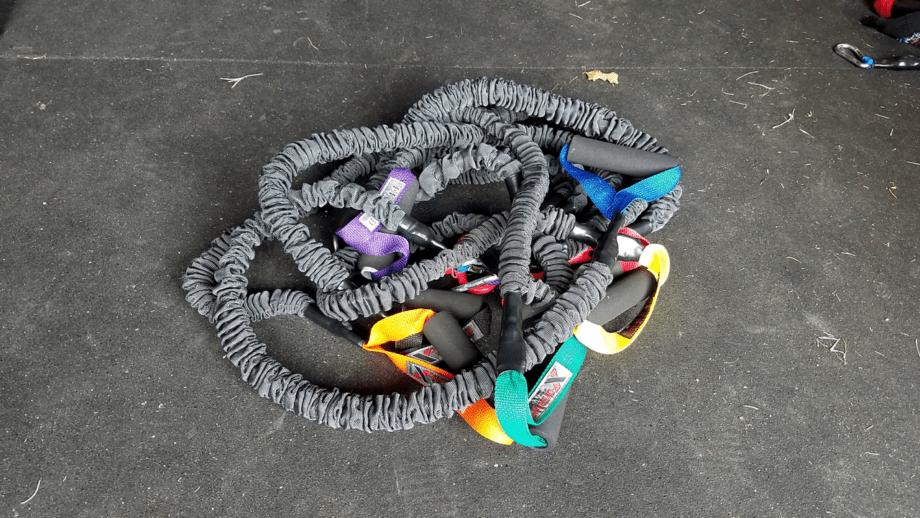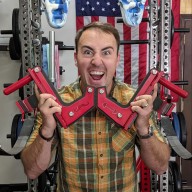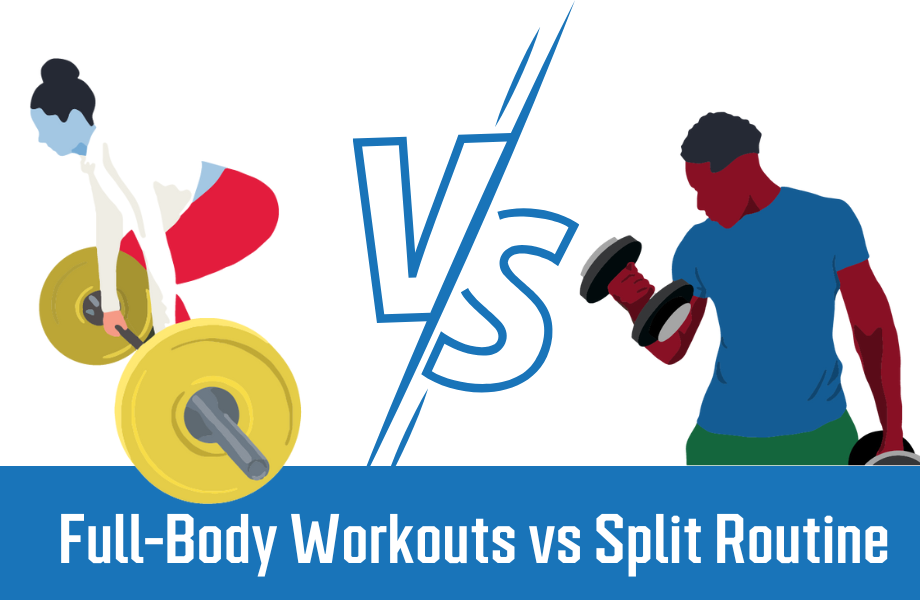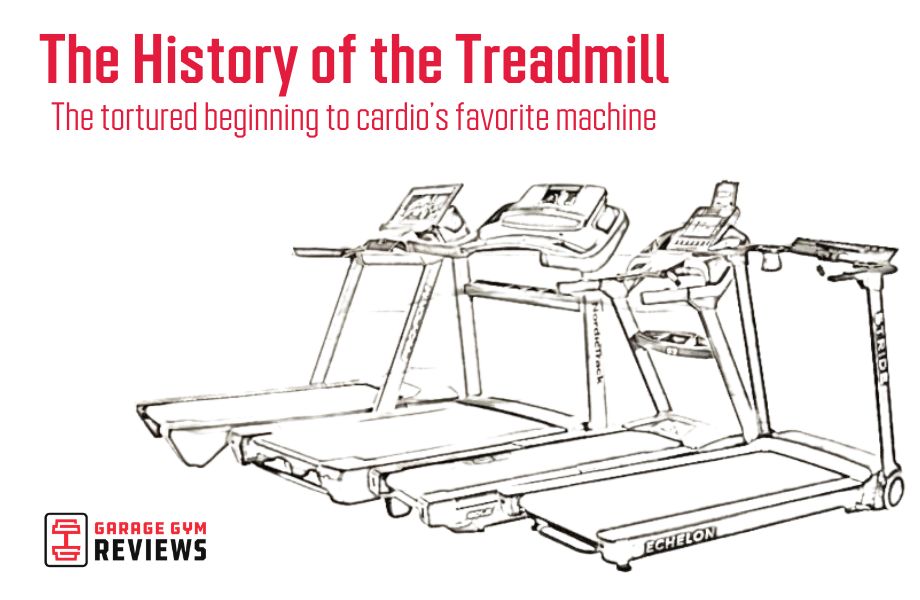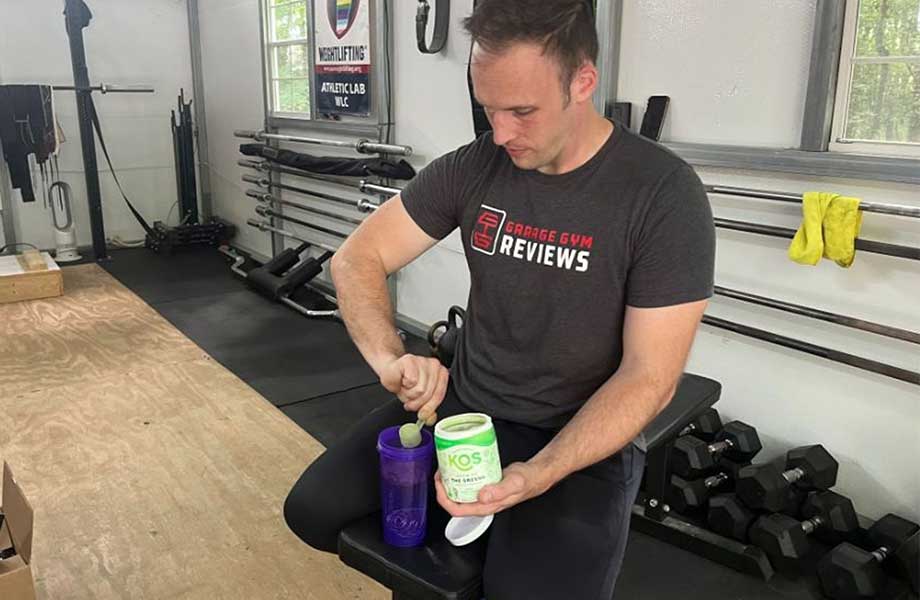After using resistance tubes from all of the major manufacturers in various settings with various workouts over the course of two months, we’ve determined that the X-Over Bands by FitCord are one of the best tube resistance bands available.
Resistance tubes are a great resistance training alternative to an Olympic barbell or dumbbell because they’re portable, lightweight, and easier on joints.
The Best Tube Resistance Bands
- Our Top Pick: FitCord X-Over Bands
- Best Budget Tube Resistance Band: BMP Resistance Band Set
- Best All-In-One Tube Resistance Band Kit: Bodylastics Stackable Tube Resistance Bands
Our Top Pick: FitCord X-Over Bands
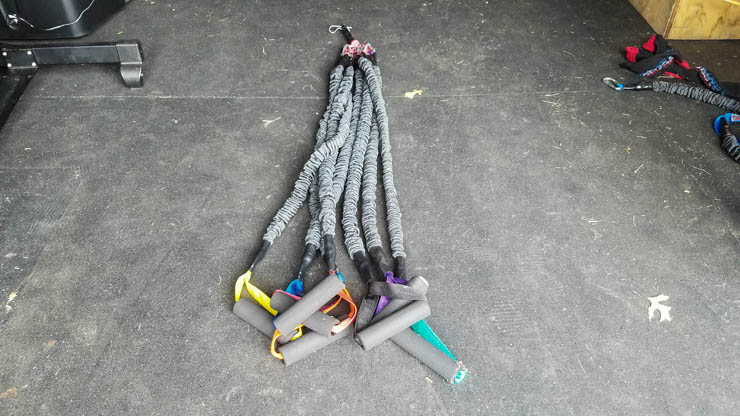
Good for: Anyone who needs a durable set of resistance bands
Top Pick
FitCord X-Over Resistance Bands
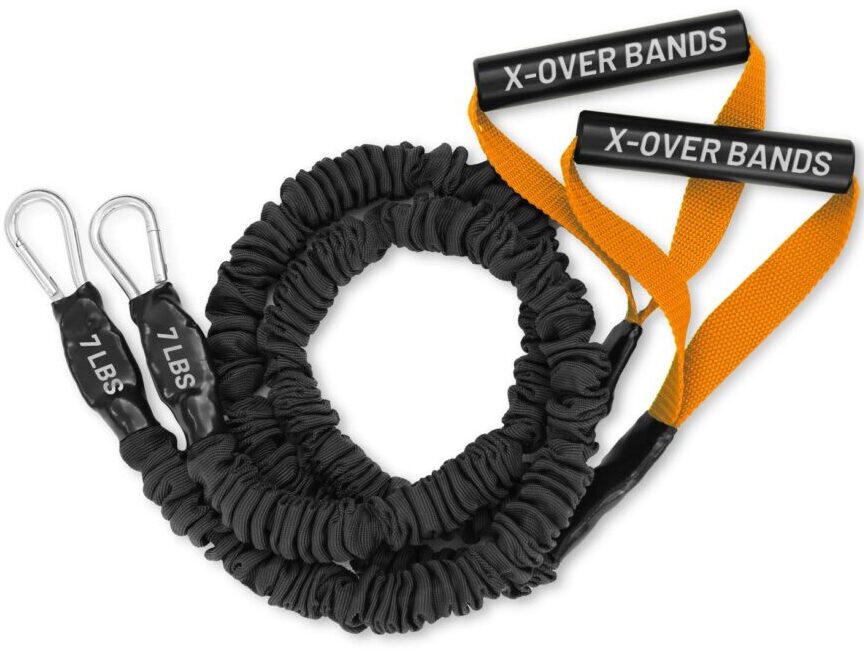
Product Highlights
- Made in the USA
- Great for developing shoulder strength for any type of throwing motion
- Good for rehabbing rotator cuff injuries
- Lasts for 150,000 reps
Pros & Cons
Pros
- Made in America
- Good for all fitness programs, physical therapy and injury rehab applications
- Tested by an Independent Laboratory and found to last beyond 150,000 repetitions before breaking
Cons
- Ultimate Door Anchor sold separately
- Pricey
Bottom Line
X-Over Resistance Bands are made in the U.S. and are great for developing shoulder strength for any type of throwing motion associated with Baseball, Softball, Tennis, Volleyball, Swimming, Golf and other activities requiring shoulder stability.
The X-Over Bands from FitCord are the best tube resistance band currently being made, and they just so happen to not be the most expensive (that’s what we call a win-win.)
The FitCord X-Over Bands is a company owned by Worldwide Fitness Products which is one of the only tube resistance band manufacturers in the USA. Not only are they made in the USA (Alabama) to be exact, but they’ve also been doing so for longer than just about anyone else.
The FitCord X-Over Bands have a name similar to the one you’ve probably heard of before, and that’s for a very good reason. FitCord was at one time a supplier for Crossover Symmetry Bands. Crossover Cords are now being made overseas, but you can still get the bands that were originally used from Fitcord.
I’m a big fan of made-in-the-USA products, but that does not equate to them being superior to others. That said, I can’t think of a way that the FitCord X-Over Bands could be further improved.
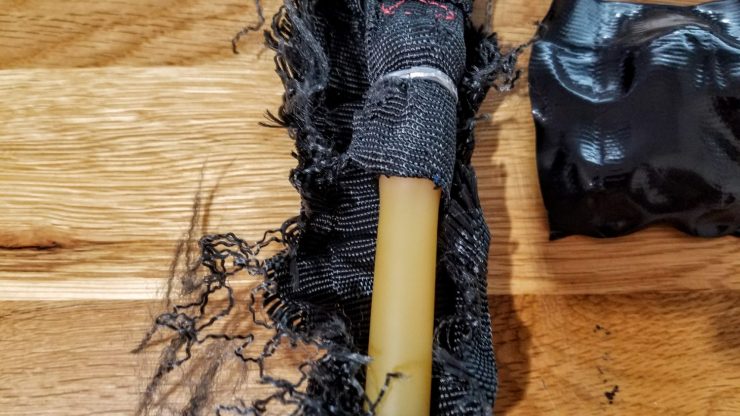
The main feature of the FitCord X-Over Bands is the tube that is used is of the highest quality available. We went through the various types of tubing that are used above, and FitCord uses the highest quality, most durable band that’s available — dipped latex.
FitCord not only says they’re durable, but they also do independent tests to prove their durability. FitCord’s have proven to last over 150,000 repetitions, which vastly outperform companies using inferior products. This means not only will the cords resist stretching over time, but they’ll also not break and therefore have a much longer usable life than their inferior counterparts.
Related: Check out my Gorilla Bow Review, a system that incorporates resistance band training with interactive programming.
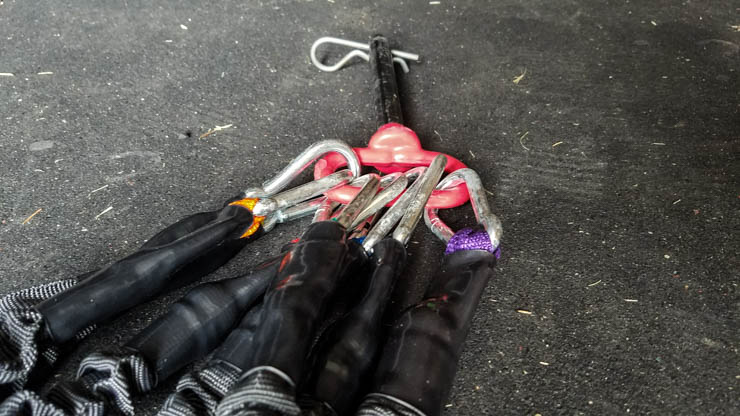
FitCord makes bands ranging from three pounds of resistance up to fifty-five pounds. If you wanted more resistance, you could grab two handles, although it’s less than ideal.
The X-Over Bands are a design that should work for most people’s workouts, especially those in overhead sports like baseball who greatly benefit from Crossover Symmetry. CrossFit athletes should also be using bands for restorative purposes and strengthening their scapula. Speaking of Crossover Symmetry, here’s their basic program:
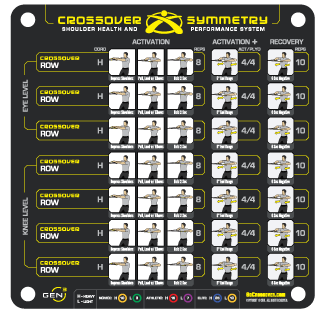
One area that must be discussed in relation to band usage is that eventually, bands will break. It doesn’t matter how good your bands are, they will eventually snap, and hopefully, it’s not during use.
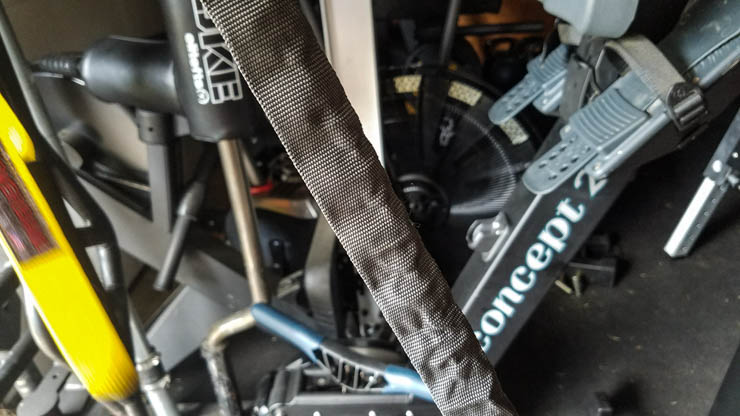
Most budget bands, including our budget pick, will not have a safety sleeve covering the bands. The safety sleeve protects the user in case of breakage, which although doesn’t happen too often, it is possible. In fact, it’s such a fear that companies producing bands without safety sleeves include a disclaimer and recommendation to wear glasses during their use. The problem, however, is nobody is going to wear glasses while working out.
Not only will FitCord’s safety sleeve prevent injury, but it also prevents the dipped latex from being damaged by UV Rays. UV degradation is known to weaken latex and other rubbers which will cause an increased chance of injury as well as weaken the band and create inconsistent resistance.
In fact, if you head into any large sporting goods store, you can see UV degradation on bands occurring in plain sight. Lifeline Bands are popular among sporting goods stores and are exposed to a lot of UV Light. As they degrade, they will change colors and begin to peel; something I’ve seen multiple times in stores. Not only is this going to provide worse resistance, but it’s also going to be unsafe, and the bands haven’t even been purchased yet.
The last thing that a safety sleeve does is it allows those allergic to latex the ability to use the bands without any adverse reactions.

Underneath the nylon sleeve at one end is a carabiner that is attached using a braided strap, a plastic plug, a metal collar (that was impossible for me to remove,) and multiple levels of stitching keeping it all together.
When you look at the bands, you’re probably like me in thinking that there can’t be much to them. However, once I began cutting them apart, it became quite apparent that a lot of thought and effort goes into making sure the bands last.
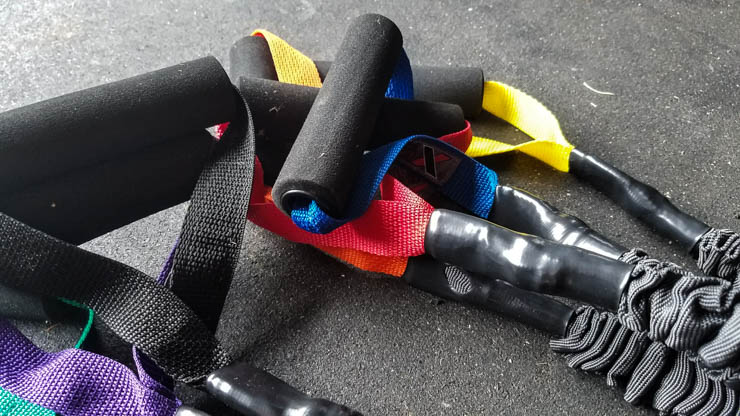
One of the reasons there’s likely so much going into the bands is because FitCord offers a lifetime warranty on the bands. If the bands break for any reason, you simply exchange the broken band for a brand new one; that’s called faith in your product.
In order to make them easy to use on my power rack, I bought a pair of hitch pins from Harbor Freight and am able to use them at all angles, easily.
The tube resistance bands from FitCord are the best available, and they’re also not the most expensive. If you’re in the market for bands, these are the ones we suggest.
When we started our search for tube resistance bands, we had no idea the number of companies currently making resistance tube bands for men and women, however, after consulting an expert in the space, using many of the various bands available, and polling users on their favorite bands, there seems to be no one producing better bands than FitCord.
Our Budget Option: BMP Resistance Band Set
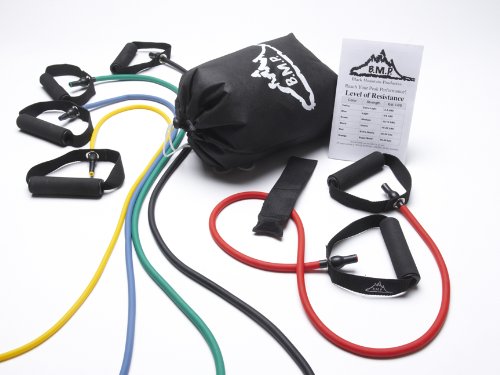
Pros:
- Only about $10 per band
- Amazon Prime shipping
- Easily portable
Cons:
- Doesn’t come with handles or other accessories
- Resistance only goes up to 50 pounds
- Not the most durable
If for some reason you don’t see the need in purchasing our top pick which features a safety sleeve, then our suggestion would be the tube resistance band set from Black Mountain Products.
In 2013, I decided to create a DIY tutorial on building a DIY Crossover Symmetry Set. It has since been a very popular article, and the bands I used for that as well as up to this point have been the Resistance Bands from Black Mountain Products.
The BMP bands are not nearly the quality of our top pick. Without question, we highly recommend using a safety sleeve. However, we have never had a band break on the BMP set despite constant usage. That said, after having used higher quality bands with a safety sleeve, we likely would not go back to using a band without a sleeve. There’s simply too much risk for not much cost savings.
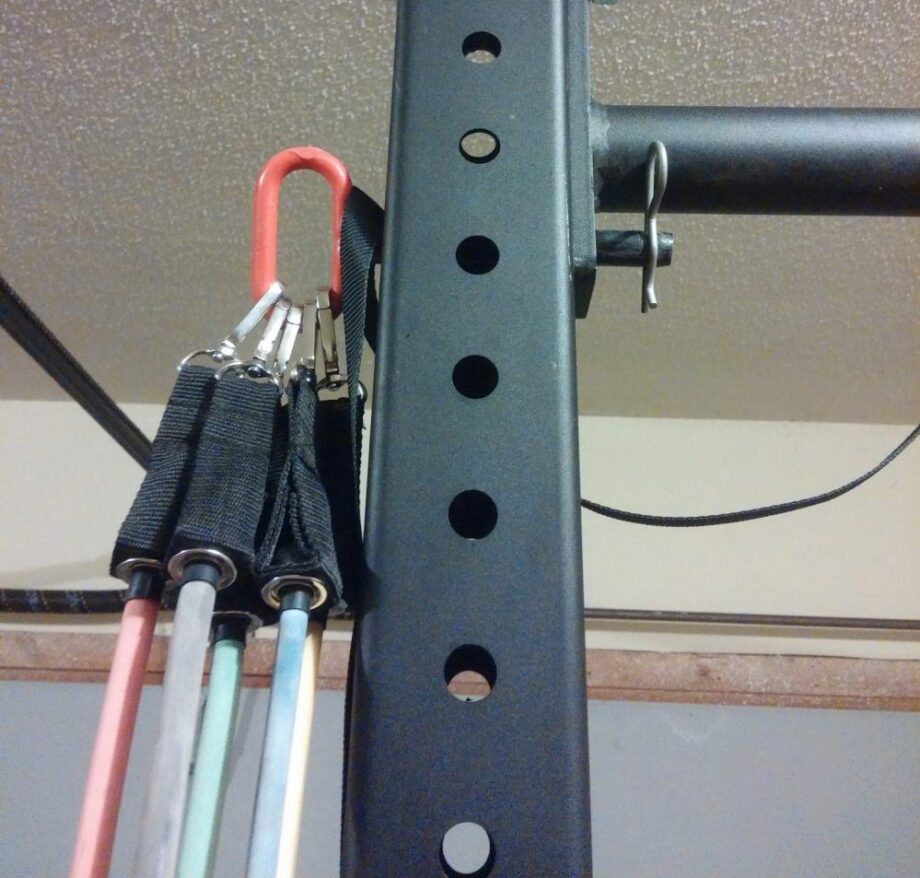
The BMP Resistance Band Set ranges from three pounds to fifty pounds and due to the detachable handles, you can easily attach multiple bands for increased resistance.
The design is much simpler than our top pick, and therefore is again more likely to break. At the top is a braided strap with a metal ring in the middle that holds the band in. If stretched too far, the band can become detached and can lead to some adverse effects on your health (like loss of eyesight.)
Black Mountain Products are likely made of Thermoplastic Rubber as they can only stretch up to three times their length before potentially snapping. You also have to factor in that you need to purchase two sets to do a Crossover Symmetry type workout and therefore will be spending upwards of $100.
In the end, the Resistance Band Set from Black Mountain Products is a good option for those on a budget and who don’t feel the need for a safety sleeve (although we highly recommend it.)
The Resistance Band Set from BMP is undoubtedly a budget option. It doesn’t have the good looks or consistent resistance that you’ll get from our top pick by FitCord, but they will get the job done. One thing we must suggest, however, is the constant inspection of the bands to prevent the loss of an eye. This may sound silly, but resistance tube bands have been known to break and take out an eye, which why having a nylon sleeve is so important.
We ended up using the BMP Resistance Band Set over the course of three years and had no problems, although there have been some who have. Be advised.
Best All-In-One Tube Resistance Band Kit: Bodylastics Stackable Tube Resistance Bands
All-in-One Kit
Bodylastics MAX Tension Resistance Bands
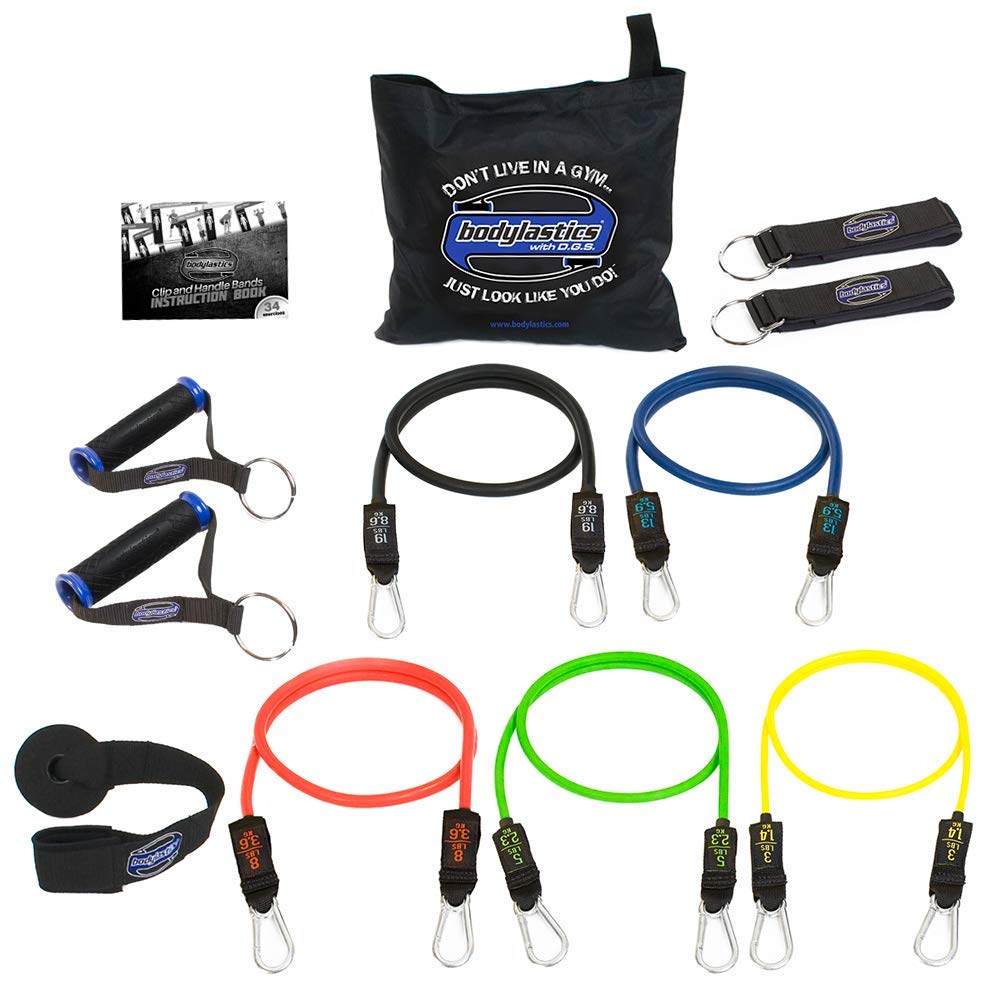
Product Highlights
- 3 options for exercise kits
- Anti-snap construction
- Comes with travel bag and workout instructions
- Stackable for increased resistance
Pros & Cons
Pros
- Priced affordably
- Options to buy 5, 6, or 7 bands
- Snap-reduction design
- Commercial-grade handles
- Stackable for more resistance
Cons
- No covering on the tubes
- Ankle straps may not be the most durable
- Uses latex, which may trigger some allergies
Bottom Line
The Bodylastics Resistance Band Set is a great option for those looking for portable, affordable resistance bands that can be stacked for increased weight.
Garage Gym Reviews fitness writer and product tester Anthony O’Reilly loves the Bodylastics Stackable Tube Resistance Bands for when he travels, which is often. “This $50 set has everything I need to get a great workout in without having to worry about finding other accessories or setups, which is often the problem with other resistance band kits,” O’Reilly says.
Not only do you get five bands totaling 96 pounds of resistance—which is enough if you’re smart with your workouts—you also get a door anchor, two handles, and two ankle straps, along with a convenient carrying bag. Bodylastics has packed a lot of force into a small package.
And unlike other door anchors, this one doesn’t require any special equipment. You simply slip the anchor through the door, shut it, and your bands will remain steady no matter how hard you pull.
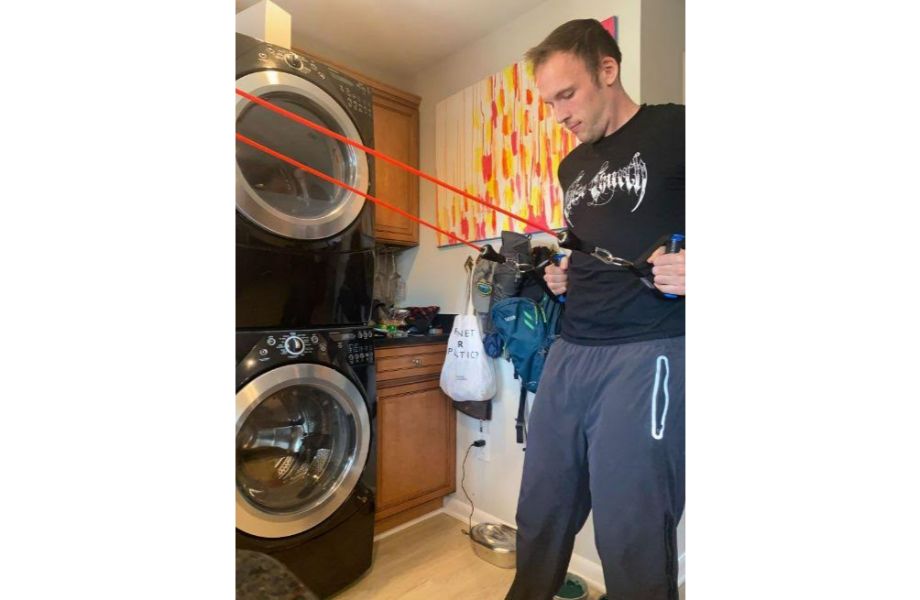
The Bodylastics bands are stackable, meaning you can clip on as many bands as you want until you reach your desired tension.
Our one complaint with this set is you need a good amount of space to feel the bands’ full tension.
The Competition: Other Tube Bands We Researched or Tested
- Crossover Cords – These are high-quality cords. However, they are more expensive and will likely not last as long as our top pick.
- Stroops Slastix – Stroops are making very high-quality resistance bands with a great look (we love the orange,) however they are more expensive, and we were unable to find what rubber is used by Stroops despite multiple emails and messages.
- Lifeline Bands – Lifeline bands can often be found in sporting goods stores such as Dick’s Sports. They feature no safety sleeve and a lower-end rubber than our top pick yet cost just as much. Although the colors are vibrant and attractive, they’re an inferior product.
- GoFit Extreme Pro Gym Set: These are similar to the Bodylastics set, but cost $10 more and come with fewer bands.
- BodyBoss 2.0 Full Portable Home Gym Workout Package: A combination band and bar workout system, the BodyBoss is a good idea in theory but it doesn’t appear to be made with high-quality materials.
Differences Between Resistance Bands
In order to learn more about what goes into the rubber and parts used in tube resistance bands, we consulted with an expert with over two decades of experience in the industry and owner of Worldwide Fitness Products.
The biggest difference between bands is the tubing that’s used. There are three main types of tubing used:
- Thermoplastic Rubber
- Extruded Rubber
- Dipped Latex
A large part of the tube resistance bands that are sold is made of Thermoplastic Rubber. The reason is quite simple and one that you could easily guess–they’re cheaper to make; and because they’re cheaper to make, they’re also easier to make a profit on.
Most people who are looking for tube resistance bands do recreational exercise and don’t want to spend extra for a more heavy-duty and safer band. You can tell a Thermoplastic Rubber (TPR) band from others by how much they are able to stretch. A TPR band will break at about 400-500% of its original length. This means that if you stretch it over 4-5x its original length, it will snap and come flying back in your face.
This, however, is based on a new band. Not one that’s been used and left out to be eaten by UV Rays (which is another sign of a TPR Band, high degradation from light.)
Extruded Rubber is the next best tube used in resistance bands and features a single layer that extends up to 600% of the original length. These can take much more wear than the man-made TPR bands, although they are still inferior to Dipped Latex. Many of the tube resistance bands on the market today that feature nylon sheaths use an extruded rubber tube–once again because it is cheaper than Dipped Latex.
The final and best resistance tube is made of Dipped Latex, which also happens to be the most natural. Dipped Latex bands can stretch up to 900% of their original length and will provide years of quality service at a consistent resistance.
How We Picked and Tested
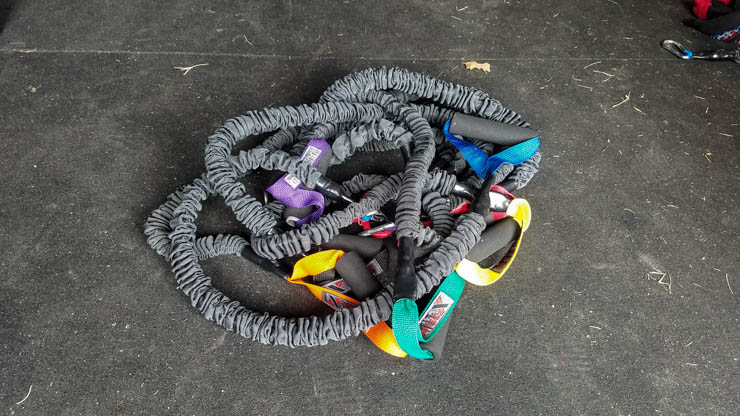
As stated, there are a lot of companies producing tube resistance bands, which is one reason a detailed look at the industry like this is so vital.
We decided to do research and find as many companies as possible who were selling resistance tubes and narrow them down to the ones most worth purchasing. What we found rather quickly was that although there are over 50 companies marketing and selling tube resistance bands, there are only a handful of manufacturers and only one in the USA.
Meaning, if you’re going to buy resistance tubes bands, they’re most likely going to be manufactured overseas (not always a bad thing) and they’re going to come from similar places.
After researching and using many of the most expensive bands, we’ve found that the best bands combine dipped latex rubber, with a nylon outer sheath, a nice carabiner, and a comfortable handle. There was only one company doing all of this at a price that wasn’t exorbitant (and also happened to be made in the USA,) and therefore holds our top spot.
For our budget pick, our specifications were much more relaxed. We wanted to find a set of bands that had decent durability, we had extensive experience with, were easily purchased, and at a low price relative to competitors.
We tested the bands by using them as DIY Crossover Symmetry attaching them to a belt for explosive jumps, using them for acceleration training, connecting them to a squat rack, and performing explosive punches as well as many other movements. These are the results.
Understanding and Choosing Your Resistance
Type
Resistance tube bands come in a range of sizes and shapes, with looped bands, tube bands, circle bands, and figure-eight bands being the most common. Depending on upper body or lower body workouts is how you want to decide which tube resistance bands to go with. For example, on upper body days, exercises like bicep curls, tube resistance bands would be your best option.
Weight
The weight range is crucial for your workouts since tube resistance bands are utilized instead of free weights. Choose something that has a high enough maximum weight to keep you challenged over time.
Style
Resistance tube bands exist in a variety of forms, each of which lends itself to a distinct type of training. Lower-body workouts benefit from resistance loops, whilst upper-body workouts benefit from resistance tubes. Consider your preferred workouts and select resistance tubes that are suited for them.
Best Tube Resistance Bands FAQs
Which is better resistance bands vs tube resistance bands?
Because of its form, resistance bands apply pressure on the body, whereas tube resistance bands apply concentrated pressure against the body. For any workouts involving pushing and tugging, resistance bands will be harsher on the hands.
How to use tube resistance bands?
There are various ways to use resistance tubes such as attaching them to the door or use them to do upright and bent-over rows, lateral raises, front raises, overhead presses, and biceps curls while standing on them; you can also use them to do rows, pull-downs, triceps, abdominal training and much more.
Do tube resistance bands actually build muscle?
Yes, you can build muscle with tube resistance bands. Working out with resistance tubes has been shown in several studies to be an effective technique to stimulate muscles and increase strength because of the tension and progressive overload you are putting your muscles through.


